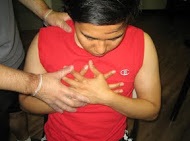An esophageal spasm is characterized as uncoordinated, irregular contractions that can be powerful in some cases. The food becomes stuck in the esophagus and cannot enter the stomach. Sometimes the spasms can spread down the esophagus in a coordinated manner but usually very strong. The condition helps move the food through the esophagus but can cause intense pain.
[youtube url=”https://www.youtube.com/watch?v=17_HHEAIRfw”]The esophagus is the channel connecting the mouth to the stomach. Contractions typically manifest in the esophagus which propels food from the mouth to the stomach at a regular and coordinated rhythm.
An esophageal spasm is experienced as a sudden, intense chest pain that can last for a short time up to an hour. It can be caused certain conditions such as gastroesophageal reflux disease (GERD) or achalasia. Even panic attacks or anxiety can also result to esophageal spasms.
What are the causes?
- An esophageal spasm can be caused by abnormal functioning of the nerves that controls the muscles used for swallowing.
- People between 60-80 years old are susceptible
- Suffering from gastroesophageal reflux disease and high blood pressure or hypertension.
- Depression or anxiety
- Consuming very hot and cold beverages or foods

An esophageal spasm is experienced as a sudden, intense chest pain that can last for a short time up to an hour. - Frequently drinking red wine increases the risk
Symptoms of an esophageal spasm
- A squeezing pain can be felt in the chest which spreads to the back, arms, neck and jaw which have similarity to an angina.
- Burning sensation or heartburn can be felt in the chest and a feeling that food is stuck in the middle of the chest.
- Swallowing of food and liquids becomes difficult.
- Regurgitation of food and drinks into the esophagus.
Treatment
- Avoid foods and beverages that can cause an episode of esophageal spasm.
- Control stress as much as possible by performing exercises every day and meditations to prevent the condition from worsening. Exercising regularly can maintain the metabolism of the body to function optimally and minimize the formation of acid in the body and prevent development of spasms in the esophagus.
- Avoid drinking or eating foods that are very cold and hot. Let them cool down before drinking or eating.
- Suck on peppermint lozenges by placing it under the tongue to relieve an esophageal spasm. Peppermint oil relaxes the smooth muscles and lessens the spasms.
- Take the prescribed medications to lessen the formation of acid and prevent gastroesophageal reflux disease. Among those suffering from anxiety and depression, they should take the prescribed antidepressants to lessen the pain felt in the esophagus. As for underlying conditions such as gastroesophageal reflux disease, the individual should take the prescribed proton pump inhibitor.
- Perform relaxation therapy such as deep breathing, muscle relaxation and listening to music to help lessen emotional and physical stress.
If the individual is drooling or has difficulty and pain in swallowing, gagging, choking, vomiting, severe pain in the chest and shortness of breath, seek medical help immediately.
